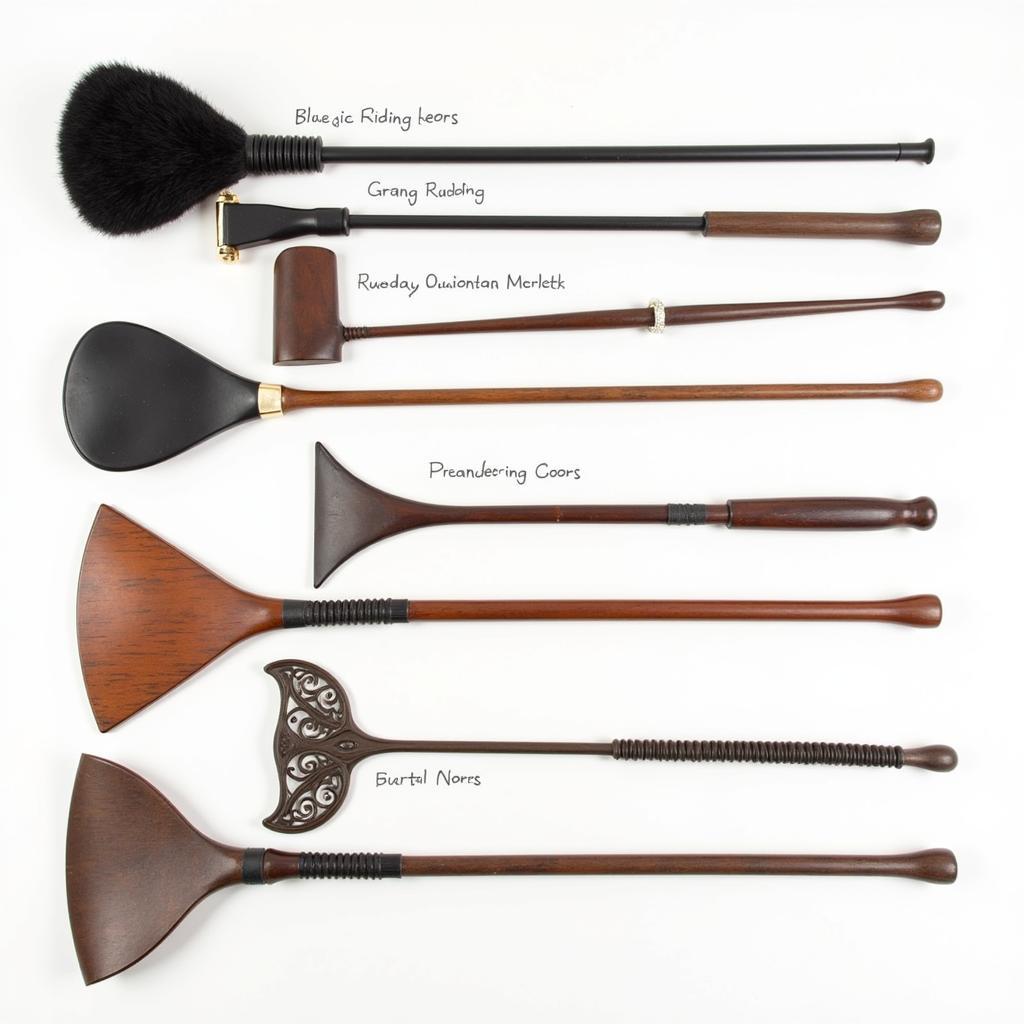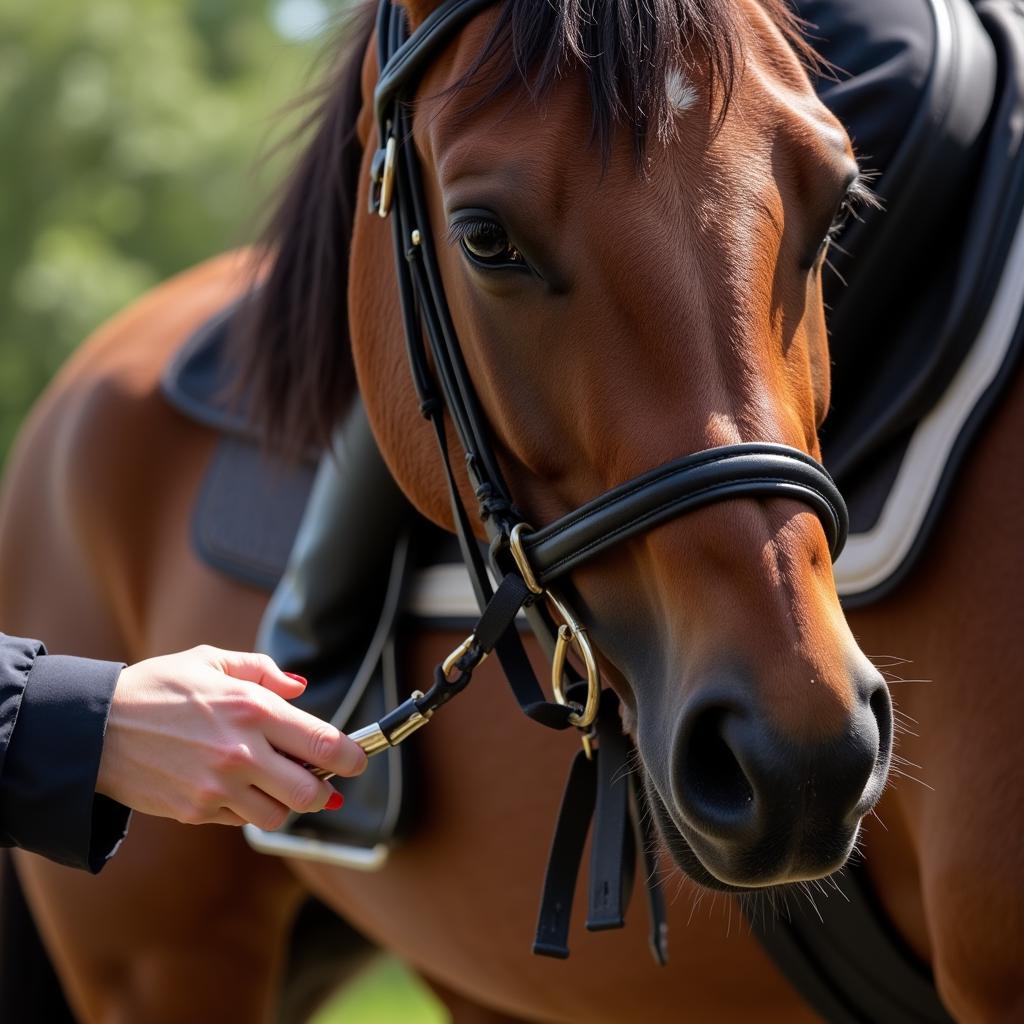Horse Riding Crops, also known as riding whips, are tools used by equestrians to communicate with and guide their horses. While often misunderstood, crops are not meant to inflict pain but rather to serve as an extension of the rider’s leg and aids, providing clear and consistent cues. Choosing the right crop and understanding its proper use is essential for both horse and rider’s well-being.
The Purpose of Horse Riding Crops
Contrary to popular belief, horse riding crops are not inherently cruel. When used correctly by a skilled rider, they act as a subtle form of communication, encouraging the horse to move forward, maintain gait, or refine movements. Crops can be particularly helpful for:
- Young or green horses: These horses are still learning and may require additional encouragement and guidance.
- Experienced horses in specific disciplines: Disciplines like dressage or show jumping often utilize crops for precise cueing.
- Riders with physical limitations: Crops can assist riders who may not have the same strength or flexibility to effectively use their legs.
 Equestrian using a horse riding crop during a dressage competition
Equestrian using a horse riding crop during a dressage competition
Different Types of Riding Crops
Horse riding crops are available in a variety of styles, lengths, and materials, each designed for specific purposes and disciplines. Some common types include:
- Dressage whips: Longer and thinner, usually made of leather, designed for precise cues and minimal contact.
- Hunting whips: Longer with a lash and often a hook, traditionally used for opening gates and clearing obstacles.
- Jumping whips: Shorter and lighter with a distinctive loop at the end, used for encouragement over jumps.
- Bat/Schooling whips: Longer whips with a long lash used in training and groundwork, for example, lunge work.
 Different types of horse riding crops for various disciplines.
Different types of horse riding crops for various disciplines.
Choosing the right type of crop depends on the horse’s size, temperament, the rider’s experience level, and the intended riding discipline.
Using a Horse Riding Crop Ethically and Effectively
The key to using a horse riding crop lies in understanding that it should never be used as punishment. Here are some guidelines for ethical and effective crop use:
- Consider it an extension of your leg: The crop should reinforce leg aids, not replace them.
- Use it sparingly: Only apply the crop when necessary to clarify a cue or encourage a response.
- Maintain consistent contact: Aim for the horse’s side, behind the girth, avoiding the flanks or sensitive areas.
- Vary the intensity: A light tap is often sufficient, while a stronger touch might be needed for a dull horse.
- Prioritize positive reinforcement: Reward desired responses with praise and a release of pressure.
 A rider demonstrates the gentle and correct use of a riding crop.
A rider demonstrates the gentle and correct use of a riding crop.
Choosing the Right Crop
Selecting the appropriate horse riding crop is crucial. Factors to consider include:
- Length: The crop’s length should be proportional to the horse’s size and the rider’s arm length.
- Weight and balance: The crop should feel comfortable and balanced in the hand, allowing for controlled movements.
- Material: Leather is a popular choice for its durability and traditional appeal, while synthetic materials offer lighter options.
- Discipline: Certain disciplines, like dressage, may have specific regulations regarding crop type and length.
It’s best to consult with a riding instructor or experienced equestrian to determine the best crop for your needs.
Beyond Riding: Other Uses for Crops
While primarily used for riding, some horse crops also serve purposes beyond communication:
- Lunging: Longer whips, like lunge whips, are used to drive the horse forward during groundwork training.
- Driving: Driving whips, similar to riding crops but often longer, are used to cue horses pulling carriages or carts.
- Groundwork: Crops can be incorporated into groundwork exercises to guide the horse’s movement and body position.
Conclusion
Horse riding crops are valuable tools for communication and guidance when used responsibly and ethically. Understanding their purpose, choosing the appropriate type, and employing correct techniques ensure a harmonious relationship between horse and rider. By prioritizing clear communication and positive reinforcement, riders can utilize crops effectively to enhance their equestrian experience.
Interested in learning more about equestrian equipment and riding accessories? Explore our selection of horse riding stocks and driving equipment for horses. Looking for the perfect gift for the horse lover in your life? Browse our curated collection of horse rider gifts.